- Home
- James Rollins
The 6th Extinction Page 41
The 6th Extinction Read online
Page 41
Jason introduced them. “My mother, Ashley Carter. And stepdad, Benjamin Brust.”
Stella shook their hands, a surprised smile making her look even more beautiful. “It’s great to meet you both. Come inside and we can get you all warm.”
She led them all toward the Back Door station, the new entrance to the subterranean world below. As she turned way, Ben hung back and nudged Jason in the side with an elbow.
“Nice, mate,” Ben said, his Aussie accent twanging a little richer, like it always did when teasing him. “Now I see why you wanted to come and introduce us in person. Found yourself a little sheila.”
Both women glanced back at them.
Jason lowered his head, shaking it a bit.
Ben scooted up between the others and took both Ashley and Stella under his arms. “So the kid tells me you found an interesting cavern system under the ice.”
“Do you know much about caves?” Stella asked.
“I’ve been known to putter around a bit.”
His stepfather was actually an expert caver, with decades of experience, most of it right here on this continent.
“Well, I doubt you’ve seen anything like what we found down here,” Stella said proudly.
“You’d be surprised how much we have seen,” his mother said with a grin. “Someday we’ll have to invite you back to our place.”
Ben nodded. “Might be an adventure in there for all of us.” He glanced back to Jason. “What do you say? Up for some fun?”
Jason hurried to keep up with them.
Why did I think this was such a good idea?
8:23 P.M., EDT
Roanoke, Virginia
Kendall Hess drove the rental car up the long tree-lined entryway to the private mental health facility. Rolling manicured lawns spread to garden parkways and small fountains. The building itself was divided into four wings, branching out like a cross in the center of these highly secured grounds.
The hospital wasn’t on any directory and few knew of these forty acres that bordered the Blue Ridge Parkway outside of Roanoke, Virginia. It was for special cases, those of interest to national security. He had to reach out to contacts with BRAG, the FBI’s Bioterrorism Risk Assessment Group, to facilitate getting a bed here.
He pulled through the final checkpoint, showed his identification, and parked. He had to leave a fingerprint at the front desk and was escorted by one of the nurses.
“How’s he doing?” Kendall asked.
“The same. If you’d like to talk to his case clinician?”
“That won’t be necessary.”
The nurse—a soft-spoken, sober young woman dressed in blues and thick-soled shoes—glanced to him. “He does have a visitor.”
He nodded.
That was good.
They crossed together down a long sterile hall painted in pastel colors that were said to be soothing. Finally they reached a door that required a special passkey. It led to a small clinical assessment space neighboring the patient’s room. A one-way glass mirror separated the two spaces.
Kendall stepped to the viewing window. The neighboring room was paneled in rich woods, with a faux fireplace that flickered silk flames. Bookshelves lined the far wall, packed full.
He found it both sad and somehow reassuring that books still brought Cutter comfort, as if buried deep down under the assaulted cerebral cortex some memory persisted, some love of knowledge.
He saw that Ashuu sat in a corner, but she stared leadenly out the window.
Kendall had arranged for Cutter’s family to be taken care of, to offer them lodging and a small stipend to remain nearby. Jori was going to a local Roanoke school, settling in well with the adaptability of the young. Cutter’s wife was more worrisome. He suspected she would eventually return to the forests, maybe once Jori was in college. The child was bright, certainly his father’s son.
Cutter lay on his back on the bed, his wrists in padded restraints, not that he was violent, but sometimes he harmed himself if not watched. He did take daily walks with the staff, and as he was in the presence of the books, he was also calmer when out in nature, some echo of his former self.
“They’re getting him settled for the night,” the nurse said. “The boy reads to him most every evening.”
Kendall flicked on the intercom to listen as Jori sat on a bedside chair, the book propped on his thin knees, and read to his father.
The nurse nodded to the volume in hand. “His son told me his father used to read that book to him every night.”
Kendall read the title and felt a twinge of guilt.
Rudyard Kipling’s The Jungle Book.
Jori’s voice was sweet, full of love for the words, for the memories they conjured.
“This is the hour of pride and power,
Talon and tush and claw.
O hear the call! Good Hunting, All
That keep the Jungle Law!”
11:48 P.M.
Takoma Park, Maryland
Gray sat on the porch swing, a cool beer balanced on the rail in front of him. The night was still hot, over ninety degrees, heavily humid. It put him in a sour mood—or maybe it was the long day visiting various assisted living facilities, narrowing his choices to those with memory care units.
A cool hand slipped into his fingers. With just the touch, the pressure inside him loosened. He squeezed her hand, thanking her.
Seichan sat next to him, freshly returned from Hong Kong. She had dumped her bags at his apartment and come straight here, roaring down the street on her motorcycle, arriving in time for dinner. She and his father got along handsomely.
Then again, who wouldn’t?
Look at her.
Even in the darkness, she was a sculpture of grace and power, feral and tender, soft curve and hard muscle. Her eyes caught every bit of light. Her lips were as soft as silk. He lifted a hand and ran a finger down along her chin, tracing a trickle of sweat along the pulse of her throat.
God, how he had missed her.
Her voice dropped a full octave to a sultry darkness. “We should get you home.”
His body ached at that invitation.
“Go on ahead,” he said. “I’ll make sure the night nurse has everything she needs, then I’ll follow.”
Seichan stirred, began to rise, but she must have sensed something and settled back to the slats of the swing. “What’s wrong?”
He turned away, noticing a flicker of fireflies in the bushes beyond the porch rail. They came earlier every year, some said as a harbinger of the changing climate, a reminder of the great forces that truly controlled the world, making everything else seem insignificant and small.
He sighed, hating to admit that sometimes he was too small. “I can save the world countless times. Why can’t I save him?” He shrugged heavily. “There’s nothing I can do.”
She found his hands and held them between her palms. “You’re an ass, Gray.”
“I never denied that,” he said, discovering a small smile.
“There is always something you can do. You’re already doing it. You can love him, remember for him, live for him, care for him, fight for him. You show that love with every hard decision you make . . . that’s what you can do. It’s not nothing.”
He remained silent.
There was one other thing he could do—but for that, he needed a moment of privacy.
“I get it, Seichan.” He shifted her hands back to her. “Go on. I’ll be right behind you.”
She leaned forward and kissed him on the cheek, then more deeply on the lips. “Don’t leave me waiting.”
Never.
As she headed down the steps toward the driveway, he entered the house and nodded to the night nurse on the sofa. “Going to go check on him before I go.”
“I think he’s already asleep,” she said.
Good.
He climbed the stairs and crossed down the hall to his father’s bedroom. The door was partly ajar, so he quietly entered and moved to his
bedside.
From a pocket, he slipped out a vial and a syringe.
Days ago, he had made an inquiry with Dr. Kendall Hess about the counteragent to Cutter Elwes’s threat. He had heard Hess believed the drug might help improve other neurological impairments. Gray made his case to Hess directly, and a sample was sent overnight to his address.
He filled the syringe now.
Once, what seemed like decades ago, he had been offered a similar choice, something that might help his father’s Alzheimer’s. He ended up pouring it down the drain, believing he had to learn to accept the inevitable, not to fight what couldn’t be fought.
He lifted the syringe, pushing a bead to the tip of the needle.
Screw that.
Seichan’s words echoed to him.
. . . fight for him . . .
He leaned over his father, jabbed the needle into his arm, and pushed the plunger home. He yanked the syringe back before his father’s lids could flutter open. When he did wake, those eyes got wide upon seeing his son looming over him.
“Gray, what’re you doing?”
Fighting for you . . .
He leaned down and kissed his father on the crown of his head.
“Just came up to say good night.”
EPILOGUE
ARBOREAL
The pack moves slowly through the jungle, lumbering in line, their numbers much smaller since starting this long trek. Echoes of fire, rock, and ruin follow them. They remember digging with their strong claws, discovering older tunnels that led them into this endless forest, freed at last. They remember blood and death. They remember betrayal and pain. They remember the blue spark and the sting of steel.
Their memories are long.
Their hatred even longer.
AUTHOR’S NOTE TO READERS:
TRUTH OR FICTION
Time to take out that scalpel and dissect this novel, separating truth from fiction. We are at the cusp of several critical changes in this world. While few doubt that the planet is undergoing its sixth mass extinction, it’s the paths that we take from here—as a species, as a society—that split in many different directions. One of the goals of this book is to walk down several of those paths and see where they might lead. But how far down those paths are we already? Let’s find out.
First, this novel tackles the real schism currently found in the environmental movement: between old-school conservationists and a new breed of ecologist, between preservationists and synthetic biologists, even between those who want to stop this pending extinction and those who welcome it. The following four books were integral to building this story and are a great resource for anyone interested in the subjects raised in this novel.
Regenesis: How Synthetic Biology Will Reinvent Nature and Ourselves by George M. Church and Ed Regis (New York: Basic Books, 2012).
The Sixth Extinction: An Unnatural History by Elizabeth Kolbert (New York: Henry Holt, 2014).
Apocalyptic Planet: Field Guide to the Future of the Earth by Craig Childs (New York: Vintage, 2013).
Countdown: Our Last, Best Hope for a Future on Earth? by Alan Weisman (New York: Back Bay Books, 2014).
But let’s look at some of the specifics, starting with the
Science
Synthetic Biology
When it comes to creating artificial life, milestones are toppling like dominoes, even faster than I could write this novel. Here’s a brief timeline that pertains to topics raised in this book (but one that barely scratches the surface):
2002: The first artificial virus is created in a lab.
2010: Craig Venter’s group builds the first living synthetic cell.
2012: The engineering of XNA (xeno nucleic acid) proves successful.
2013: A fully functional chromosome is reconstructed from scratch.
May 2014: Scripps Institute adds new letters to our genetic alphabet.
XNA
Multiple labs have produced various strains of XNA. It has proven to be hardier, and yes, it can be used to theoretically replace the DNA in all living creatures. It’s also believed to have once been a predominant form of life on this planet. So could a pocket of such life still be out there, hidden in some shadow biosphere? Only time will tell.
Facilitated Adaptations
The goal of Dr. Kendall’s research—to discover ways to enhance species to better suit environmental changes—is actively being pursued in labs from a real-world perspective.
Even Cutter Elwes’s creations were based on a clever installation project called “Designing for the Sixth Extinction” by Alexandra Daisy Ginsberg. She proposes that we should seek to release bioengineered creations into the wild (and has even gone so far as to patent some of her imaginative life-forms). Fascinating stuff. Her work is viewable on the Internet.
Evolution Machines
1. The CRISPR-Cas9 technique described in this novel is real! It’s already revolutionizing the world of genetic study and manipulation. With a little training, a novice could perform these advanced techniques. The precision of this control has been described as offering researchers the equivalent tool to editing individual letters of an encyclopedia—without making a spelling error.
2. MAGE and CAGE were invented by genetic engineers from Yale University, MIT, and Harvard University. They allow large-scale edits to a genome and hold great promise to revive extinct species.
De-Extinction
I describe in the novel how labs around the world are trying to revive extinct species. These include the woolly mammoth (from elephant DNA), the passenger pigeon (from ordinary pigeon DNA), and an extinct oxen known as an aurochs (from cattle DNA). But there are also many other methods beyond gene editing to restore these species, like somatic cell nuclear transfer.
And, yes, there is indeed a Russian named Sergey Zimov who is building “Pleistocene Park” in Siberia as a home for woolly mammoths.
Extremophiles
The search for new chemicals and compounds has turned the hunt for unusual organisms living in harsh environments into a biological gold rush. In turn, scientists have discovered life growing in many places that were once considered to be inhospitable to life: in boiling sea vents, deep under the ice, in toxic wastelands. Entire ecosystems have been discovered, leading to the term shadow biospheres.
Indestructible Viruses
I based the organism that Dr. Hess engineered on a real-world microorganism: a bacterium named Deinococcus radiodurans. This stubborn little bug can survive radiation levels fifteen times stronger than the famously resistant cockroach. It’s also renowned for its ability to endure freezing temperatures, dehydration, burning heat, and the strongest acids. Even the vacuum of space won’t kill it. Guinness Book of World Records declared it the toughest form of life. Let’s hope someone out there doesn’t start playing around in that bacterium’s genetic toolbox.
Jumping Genes (Retrotransposons)
Again it’s surprisingly true that geneticists now accept that a potent engine of evolution is “jumping genes.” Not only can these traits be transmitted to offspring but also between species, in a process called horizontal gene transfer. Though it’s hard to believe, a full quarter of cattle DNA has been proven to have come from a species of horned viper. So be careful of that next burger.
Biohacking/DIY Biology/Biopunks
No matter what you call it, garages, cellars, and community centers have become hotbeds for genetic experimentation and patenting of new life-forms. I mentioned in this novel about a Kickstarter program that seeks to produce a glowing weed. This technology has even become “plug and play” with the introduction of “biobricks,” a genetic toolbox for playing God in your own backyard.
The three major fears about synthetic biology and biohacking are bioterrorism, lab accidents, and the purposeful release of synthetic organisms. So I decided to go for the Triple Crown and tackle all three in one thriller.
Magnetism and Microbial Life
Can magnetic fields kill bacteria, viruses, and fun
gi? At the right static or oscillating fields, YES. The FDA has performed an entire study on the subject, even identifying the field strengths necessary to kill specific species.
Panspermia
This is the theory that life on earth might have come from a seed of organic life delivered to the planet via a meteor strike. The meteor mentioned in this book that caused the massive Wilkes Crater in Antarctica is believed to have triggered the Permian mass extinction, which came within a hairsbreadth of ending all life. So I wondered: If all those environmental niches were emptied out by this extinction, what if that same meteor brought something foreign to fertilize those newly emptied fields?
Antarctic Life
The Russians are currently continuing to drill into Lake Vostok, a lake as big as any of the Great Lakes, yet isolated for millennia miles under the ice. What life might be found there? Early signs: There’s plenty. But that southernmost continent is rife with odd biological details.
—In 1999, a virus was discovered on the ice that no animal or human is immune to.
—In 2014, a 1,500-year-old Antarctic moss was brought back to life. Likewise, in Siberia, a virus that had been frozen for 30,000 years was resurrected.
—The petrified remains of great forests have been found in multiple locations on that continent.
But so far, we’ve been literally barely scratching the surface. What’s truly under that ice is yet to be discovered. It should be interesting because of . . .
Antarctic Geology
Only recently have we begun to understand how weird that continent’s geology truly is. While the continent presents a frozen face, down deep it’s a warm, wet marshland. There are hundreds of subglacial lakes, often with rivers flowing between them, some as large as the Thames. There are waterfalls that flow up. There are active volcanoes, some with lava flowing under miles of ice. Just this past year (early 2014) scientists discovered Antarctica has a trench that dwarfs our Grand Canyon. In all of that strange and otherworldly landscape, what might yet be undiscovered?

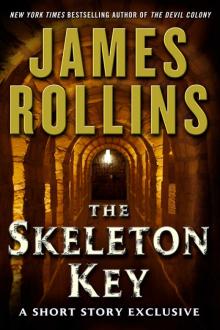 The Skeleton Key
The Skeleton Key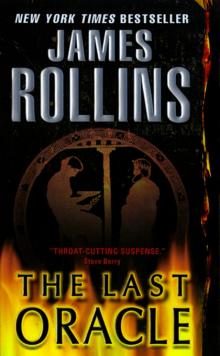 The Last Oracle
The Last Oracle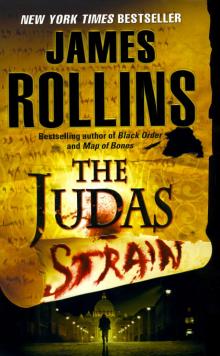 The Judas Strain
The Judas Strain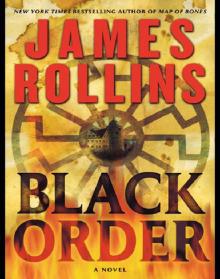 Black Order
Black Order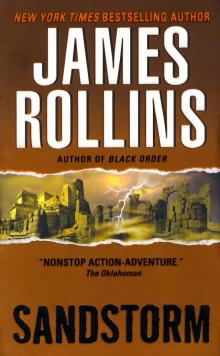 Sandstorm
Sandstorm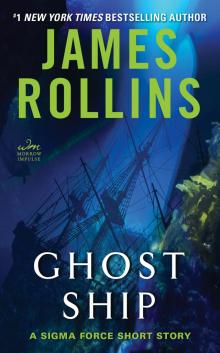 Ghost Ship
Ghost Ship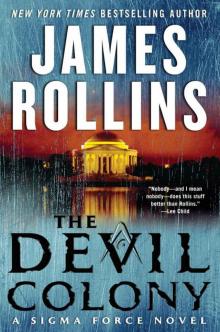 The Devil Colony
The Devil Colony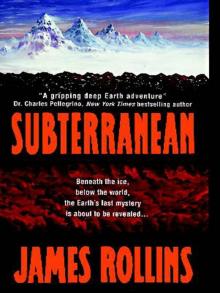 Subterranean
Subterranean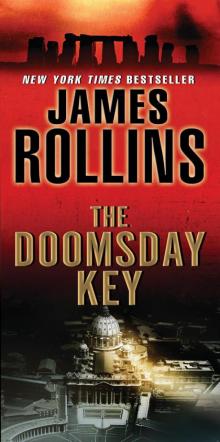 The Doomsday Key
The Doomsday Key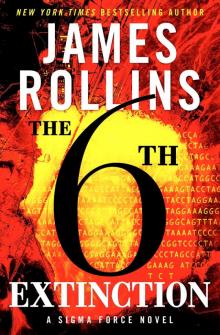 The 6th Extinction
The 6th Extinction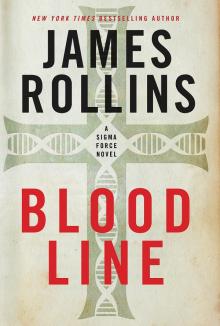 Bloodline
Bloodline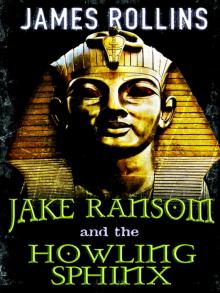 Jake Ransom and the Howling Sphinx
Jake Ransom and the Howling Sphinx The Midnight Watch
The Midnight Watch Map of Bones
Map of Bones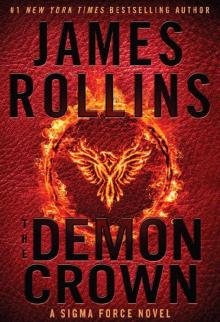 The Demon Crown
The Demon Crown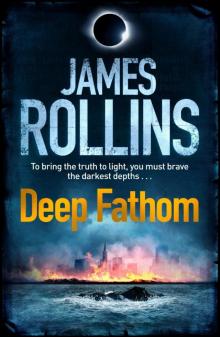 Deep Fathom
Deep Fathom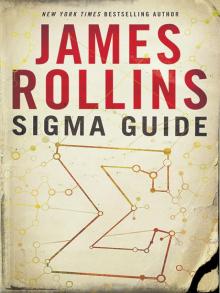 Sigma Guide
Sigma Guide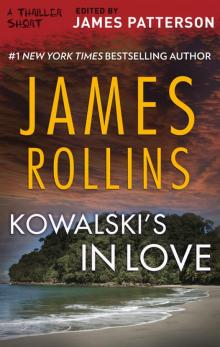 Kowalski's in Love
Kowalski's in Love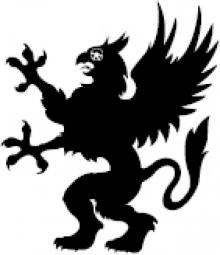 Jake Ransom and the Skull King's Shadow
Jake Ransom and the Skull King's Shadow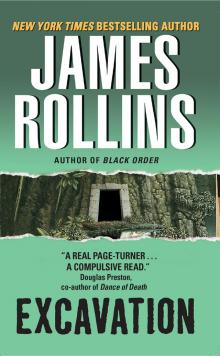 Excavation
Excavation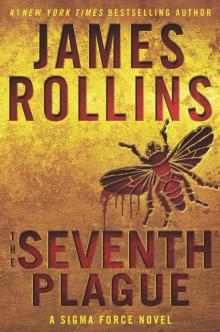 The Seventh Plague
The Seventh Plague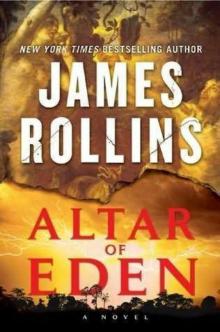 Altar of Eden
Altar of Eden Unrestricted Access: New and Classic Short Fiction
Unrestricted Access: New and Classic Short Fiction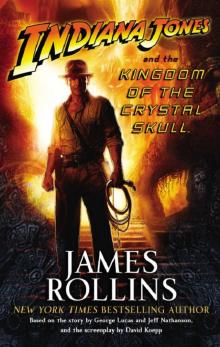 Indiana Jones and the Kingdom of the Crystal Skull
Indiana Jones and the Kingdom of the Crystal Skull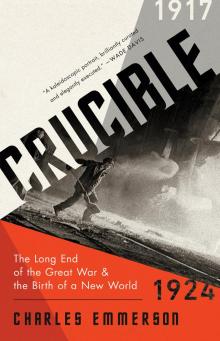 Crucible
Crucible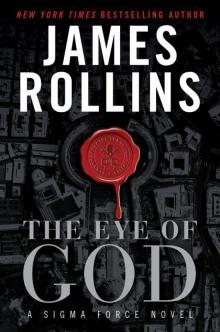 The Eye of God
The Eye of God The Bone Labyrinth
The Bone Labyrinth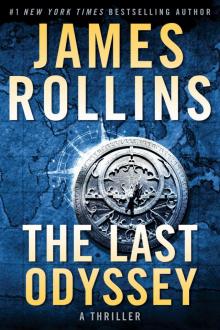 The Last Odyssey: A Thriller
The Last Odyssey: A Thriller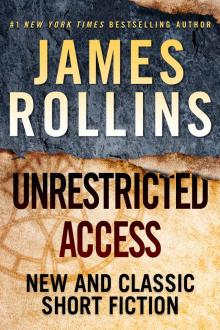 Unrestricted Access
Unrestricted Access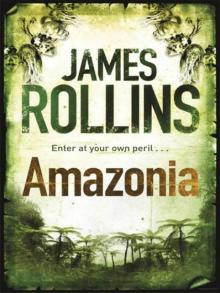 Amazonia
Amazonia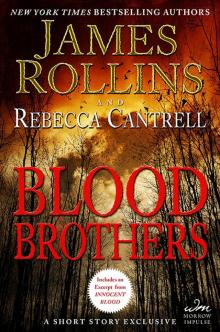 Blood Brothers: A Short Story Exclusive
Blood Brothers: A Short Story Exclusive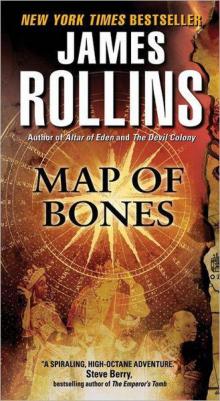 Map of Bones: A Sigma Force Novel
Map of Bones: A Sigma Force Novel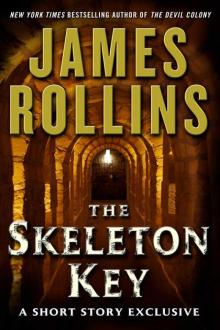 The Skeleton Key (sigma force)
The Skeleton Key (sigma force)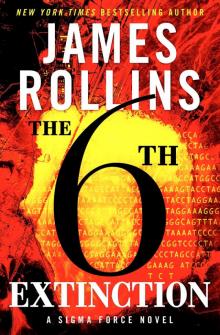 Sigma Force 10 - The Sixth Extinction
Sigma Force 10 - The Sixth Extinction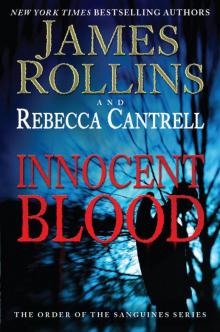 Innocent Blood
Innocent Blood Map of Bones sf-2
Map of Bones sf-2 The Eye of God: A Sigma Force Novel
The Eye of God: A Sigma Force Novel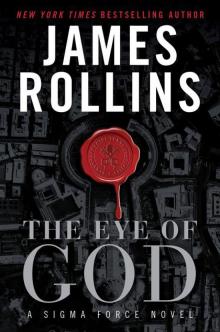 The Eye of God: A Sigma Force Novel sf-9
The Eye of God: A Sigma Force Novel sf-9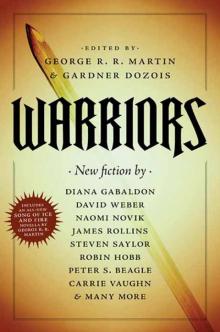 The Pit
The Pit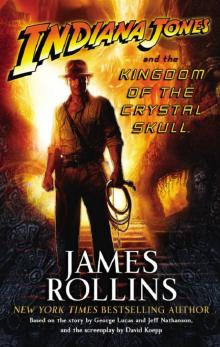 Indiana Jones and the The Kingdom Of The Crystal Skull
Indiana Jones and the The Kingdom Of The Crystal Skull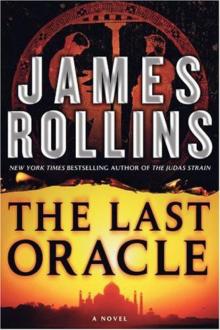 The Last Oracle (2008) sf-5
The Last Oracle (2008) sf-5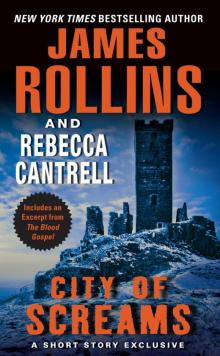 City of Screams
City of Screams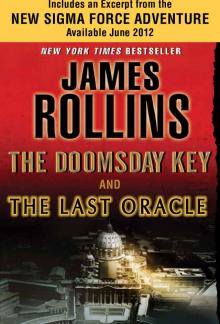 The Doomsday Key and The Last Oracle with Bonus Excerpts
The Doomsday Key and The Last Oracle with Bonus Excerpts The Judas Strain sf-4
The Judas Strain sf-4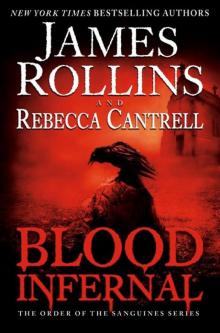 Blood Infernal
Blood Infernal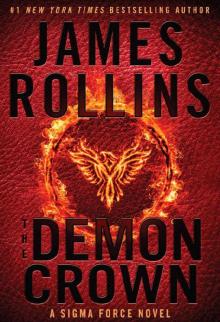 The Demon Crown: A Sigma Force Novel
The Demon Crown: A Sigma Force Novel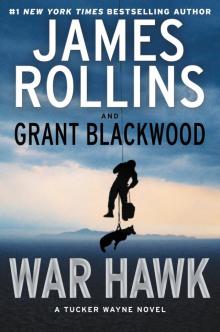 War Hawk: A Tucker Wayne Novel
War Hawk: A Tucker Wayne Novel SANDSTORM sf-1
SANDSTORM sf-1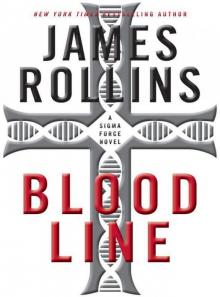 Bloodline: A Sigma Force Novel
Bloodline: A Sigma Force Novel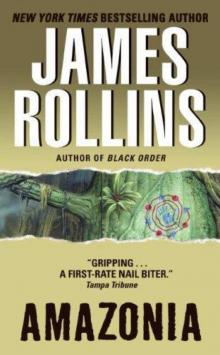 Amazonia: a novel
Amazonia: a novel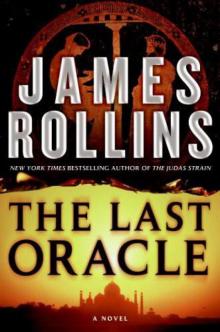 The Last Oracle: A Sigma Force Novel
The Last Oracle: A Sigma Force Novel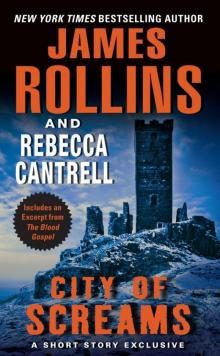 City of Screams (the order of the sanguines)
City of Screams (the order of the sanguines)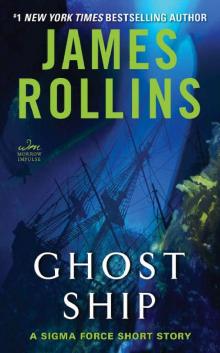 Ghost Ship: A Sigma Force Short Story
Ghost Ship: A Sigma Force Short Story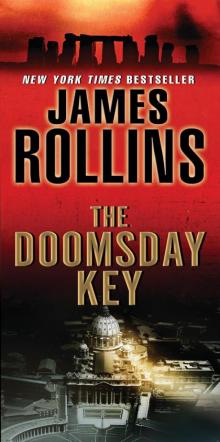 The Doomsday Key: A Sigma Force Novel
The Doomsday Key: A Sigma Force Novel